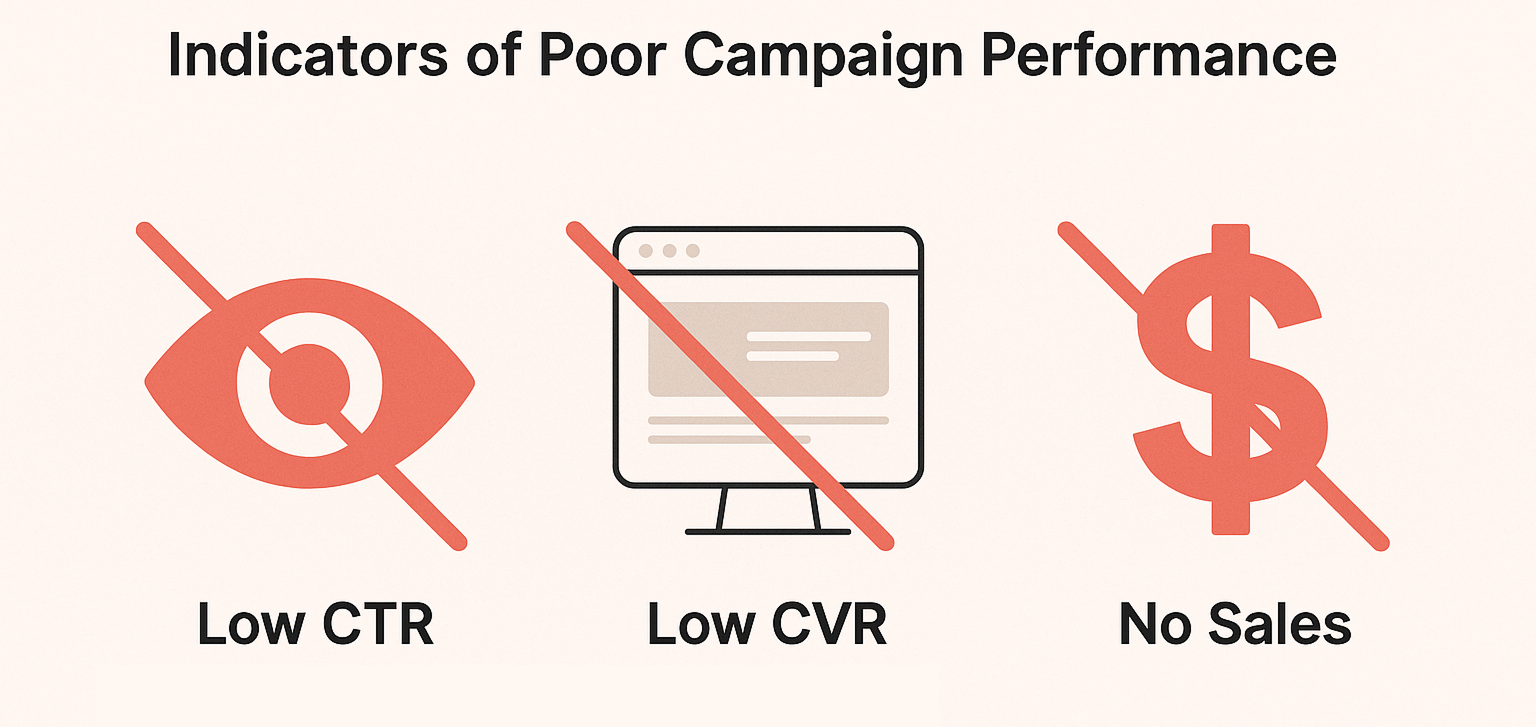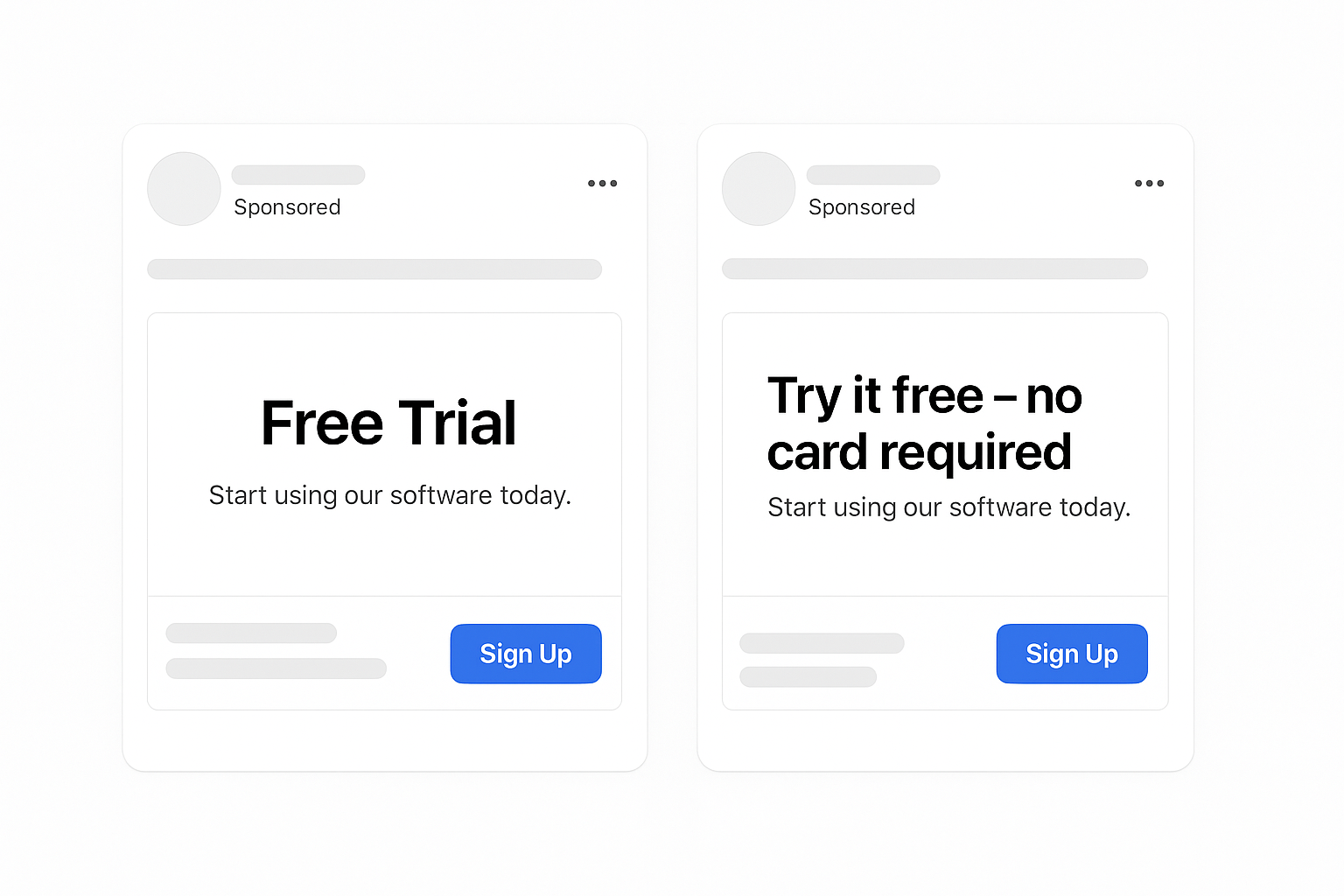Some campaigns look good on paper but deliver poor results. Others start strong, then suddenly tank. If you’re running Meta or Facebook Ads, you’ve likely seen a few crash landings yourself.
But here’s the upside: most underperforming campaigns are recoverable. They’re not failures, they’re feedback loops — and with the right strategies, you can turn low-performing ads into ROI machines.
Let’s dig into what to fix, where to look, and how to scale profitably.
1. Run a Full-Funnel Diagnostic
You can’t fix what you don’t fully understand. If your campaign performance is underwhelming, don’t just look at surface metrics like CTR or CPC. Start with a simple question: Where exactly is the drop-off happening?

Break your funnel into stages:
-
Impressions to clicks (CTR): Low CTR? You likely have a weak hook, unengaging creative, or audience mismatch.
-
Clicks to leads (CVR): High CTR but no conversions? Your landing page or lead form may not match the ad’s promise.
-
Leads to sales: Getting signups but no revenue? The issue may lie in follow-up emails, your offer structure, or the sales process.
Need help spotting red flags faster? This guide to campaign diagnostics breaks down why ad sets lose momentum — and what to check first.
2. Refine Your Targeting (More Than You Think You Need To)
Many advertisers think they have the right audience. But even slight targeting misalignments can tank conversions. Are your ads reaching decision-makers — or just content scrollers?
Start by:
-
Reviewing actual audience breakdowns (age, gender, device, placement).
-
Excluding irrelevant or underperforming segments.
-
Testing layered targeting or custom audiences based on behavior.
If you're not sure how to tighten your focus, read Facebook Ad Targeting 101 for a smart refresh.
For high-stakes accounts, go deeper with persona-driven segments. This audience guide walks you through building high-intent profiles that align with real buyer motivations.
3. Rewrite the Offer Before You Rewrite the Ad
When campaigns stall, most people jump straight into creative changes. But often, it’s the offer — not the headline or image — that needs fixing.

Subtle copy tweaks that remove friction can drastically improve ad performance
Ask yourself:
-
Is this offer truly irresistible to the audience I’m targeting?
-
Does it reduce friction? (Think: risk reversal, limited commitment, fast wins.)
-
Is the value clear in 3 seconds or less?
You don’t have to invent something new. Sometimes, reframing the same offer using urgency, a bonus, or clearer benefit language can shift response dramatically.
For example:
-
"Free 14-Day Trial" can be restated as "Try it free — no card required."
-
"Download Our Whitepaper" can become "See how [X brand] cut ad costs by 43%."
4. Creative Fatigue Is Real — Rotate Smarter
If you’re running the same ads for weeks and wondering why conversions are sliding, you’re probably facing creative fatigue. The audience is still there. They're just bored.
Here's how to keep your campaigns fresh:
-
Rotate creatives every 7–14 days.
-
Repurpose one concept into multiple formats (carousel, video, static, Reels).
-
Use AI creative tools to scale variations quickly.
A quick trick: instead of launching five new ads, try refreshing a proven winner with a new hook, updated testimonial, or seasonal spin.
5. Optimize Budget Distribution and Bidding
A campaign may underperform simply because you're putting money in the wrong places. Check:
-
Are high-performing ad sets getting enough budget? Shift spend toward winners.
-
Are you forcing too many small ad sets? Consider consolidation.
-
Are you optimizing for the right objective? For example, if you’re running a conversion campaign but not getting purchases, revisit your Meta campaign objectives.
Use data to rebalance. If you’re in the learning phase, avoid excessive tweaks — but once there’s enough data, don’t let bad ad sets burn your budget.
6. Strengthen Trust Signals
If users are clicking but not converting, they may be interested — but skeptical.
You can fix that with trust enhancers:
-
Add real testimonials or star ratings (especially on landing pages).
-
Include logos of clients, partners, or press features.
-
Use specific proof points: "Trusted by 12,000+ marketers" beats "We’re trusted."
Remember: people don’t want to believe your product works. They want proof that it already does.
7. Test Messaging, Not Just Design
A campaign’s message is what persuades — not the colors, not the layout.
To increase conversions, test new angles such as:
-
Pain-point focused: "Tired of ad campaigns burning cash?"
-
Outcome-focused: "Cut CAC in half in 30 days."
-
Objection-handling: "No agency? No problem. This runs itself."
Even simple language shifts — like changing "schedule a call" to "get a quick walkthrough" — can double click-throughs.
Not sure what to test first? This breakdown of common conversion issues helps you prioritize copy, creative, or audience.
8. Respect the Algorithm’s Learning Phase
Tired of watching a campaign spend without results? It could be stuck in the learning phase — or never properly exiting it.

Quick reminders:
-
Don’t change your budget or targeting daily.
-
Let new ads run for 3–5 days before making judgment calls.
-
Avoid splitting your conversions across too many ad sets or creatives.
To help Meta stabilize your campaigns faster, review these tips for getting out of the learning phase.
Final Take: Performance Can Be Engineered
Low-performing campaigns aren’t a sign to give up — they’re a signal to dig deeper.
With better diagnostics, stronger messaging, and more precise targeting, you can rebuild the campaign without scrapping everything. The best-performing advertisers aren’t lucky. They’re relentless testers.
So step back. Audit the funnel. Align the message to the right audience. And keep testing until performance clicks into place.

